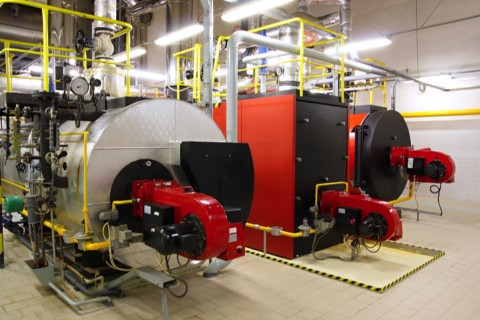Warmer months are approaching, and many facilities are preparing to bring their cooling towers back into service while planning to take their boiler offline for the coming season. If your facility has been closed or reduced its functioning due to coronavirus, you’ll want to make sure you have your boiler’s maintenance on your checklist too.
Your boiler layup process is a critical part of your Water Management Plan. It protects your boiler from corrosion, extends the life of your boiler and can help minimize costly maintenance issues down the road. An idle boiler that has not been stored properly creates the perfect environment for oxygen pitting – in fact, most oxygen pitting occurs when boilers are idle. The layup process addresses this issue by ensuring the boiler is fully drained, vigorously cleaned, carefully inspected, thoroughly repaired (if needed), and appropriately prepared for the offseason. Done properly, the layup process sets the stage for a smooth return to service.
As you start to think about your boiler layup, you should know that there are two different processes to consider for laying up your boiler. One approach is the dry layup – appropriately named because after the boiler is drained and all internal surfaces are dried, the boiler sits empty during the off season. By contrast, the wet layup follows the first two steps of a dry layup, but instead of sitting empty for the off season, the boiler is filled with water that has been treated with corrosion inhibitors. To choose which is right for your site, consider the following:
- How long will the boiler be out of service?
- How much notice will you have before you need to bring it back into service?
- Will the boiler be subjected to freezing temperatures during the offseason?
PERFORMING A WET LAYUP
In preparation for the wet layup, the boiler should be fully drained and cleaned of existing contaminants, inspected for damage and repaired if needed. These steps will speed the process when the boiler is returned to service and reduce the risk of issues during the next heating season. The boiler is then refilled with water that’s been treated with chemicals to keep corrosion from spreading.
Wet layups are best when the boiler may need to be brought into service on short notice, or the boiler will only be out of service for a short period (less than a month) and temperature will be above freezing.
PERFORMING A DRY LAYUP
As with the wet layup, the first steps in preparing for the dry layup are to fully drain and clean the boiler to remove contaminants, inspect for damage and repair if needed. The dry layup also requires that the boiler be completely dried and filled with desiccant to absorb moisture while it’s out of service.
Dry layups are recommended for situations where the boiler will be out of service for more than a month or where the temperature might fall below the freezing mark.
CONSULT A PROFESSIONAL
If you have questions or would like assistance with your layup, our water management experts can help your team decide which layup process is right for your facility and perform it. Give us a call today at (866) 264-8453.

